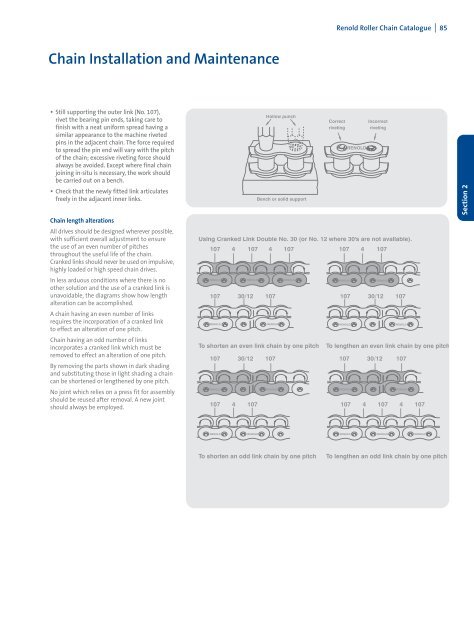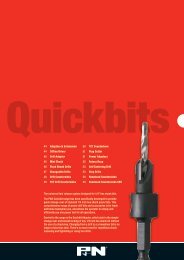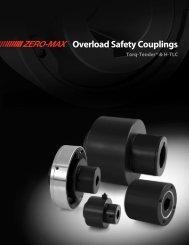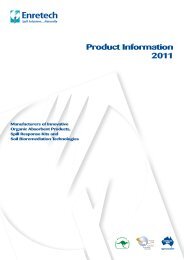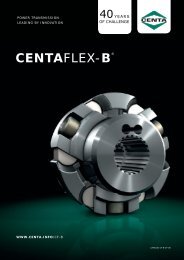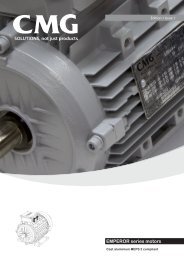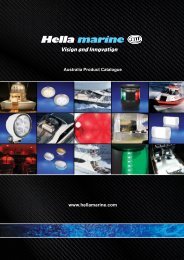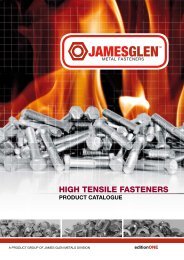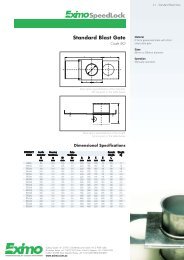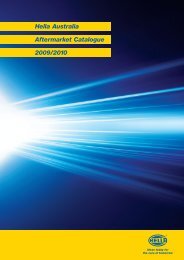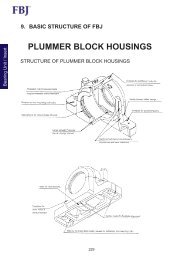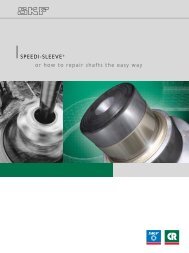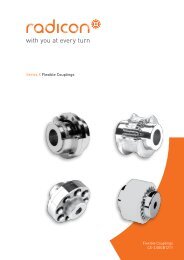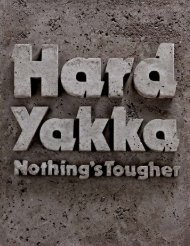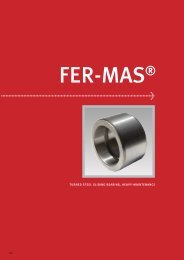Installation and Maintenance
Installation and Maintenance
Installation and Maintenance
You also want an ePaper? Increase the reach of your titles
YUMPU automatically turns print PDFs into web optimized ePapers that Google loves.
Renold Roller Chain Catalogue I 85<br />
Chain <strong>Installation</strong> <strong>and</strong> <strong>Maintenance</strong><br />
• Still supporting the outer link (No. 107),<br />
rivet the bearing pin ends, taking care to<br />
finish with a neat uniform spread having a<br />
similar appearance to the machine riveted<br />
pins in the adjacent chain. The force required<br />
to spread the pin end will vary with the pitch<br />
of the chain; excessive riveting force should<br />
always be avoided. Except where final chain<br />
joining in-situ is necessary, the work should<br />
be carried out on a bench.<br />
• Check that the newly fitted link articulates<br />
freely in the adjacent inner links.<br />
Chain length alterations<br />
All drives should be designed wherever possible,<br />
with sufficient overall adjustment to ensure<br />
the use of an even number of pitches<br />
throughout the useful life of the chain.<br />
Cranked links should never be used on impulsive,<br />
highly loaded or high speed chain drives.<br />
In less arduous conditions where there is no<br />
other solution <strong>and</strong> the use of a cranked link is<br />
unavoidable, the diagrams show how length<br />
alteration can be accomplished.<br />
A chain having an even number of links<br />
requires the incorporation of a cranked link<br />
to effect an alteration of one pitch.<br />
Chain having an odd number of links<br />
incorporates a cranked link which must be<br />
removed to effect an alteration of one pitch.<br />
By removing the parts shown in dark shading<br />
<strong>and</strong> substituting those in light shading a chain<br />
can be shortened or lengthened by one pitch.<br />
No joint which relies on a press fit for assembly<br />
should be reused after removal. A new joint<br />
should always be employed.<br />
Section 2


